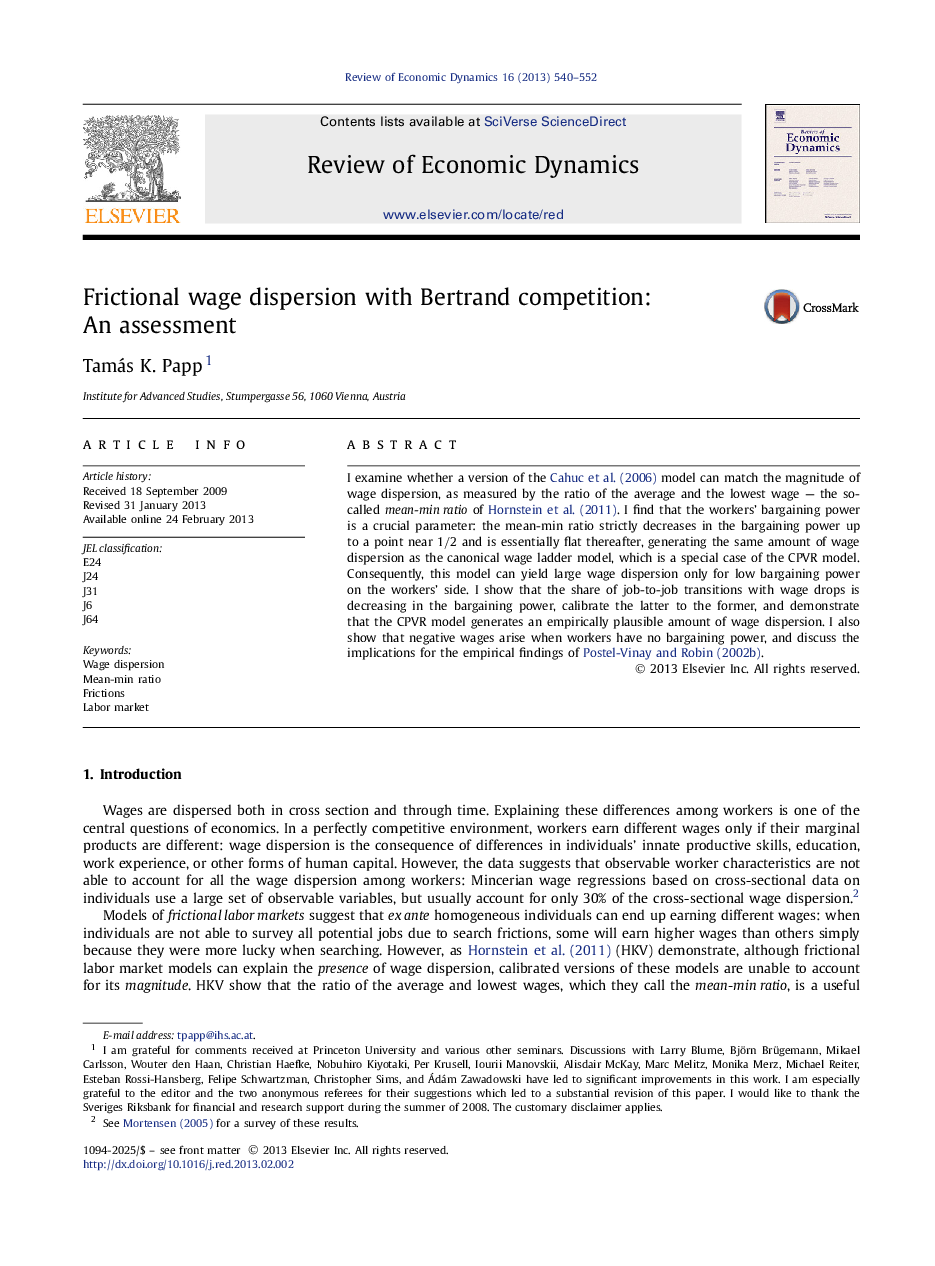| Article ID | Journal | Published Year | Pages | File Type |
|---|---|---|---|---|
| 986685 | Review of Economic Dynamics | 2013 | 13 Pages |
I examine whether a version of the Cahuc et al. (2006) model can match the magnitude of wage dispersion, as measured by the ratio of the average and the lowest wage — the so-called mean-min ratio of Hornstein et al. (2011). I find that the workersʼ bargaining power is a crucial parameter: the mean-min ratio strictly decreases in the bargaining power up to a point near 1/2 and is essentially flat thereafter, generating the same amount of wage dispersion as the canonical wage ladder model, which is a special case of the CPVR model. Consequently, this model can yield large wage dispersion only for low bargaining power on the workersʼ side. I show that the share of job-to-job transitions with wage drops is decreasing in the bargaining power, calibrate the latter to the former, and demonstrate that the CPVR model generates an empirically plausible amount of wage dispersion. I also show that negative wages arise when workers have no bargaining power, and discuss the implications for the empirical findings of Postel-Vinay and Robin (2002b).
